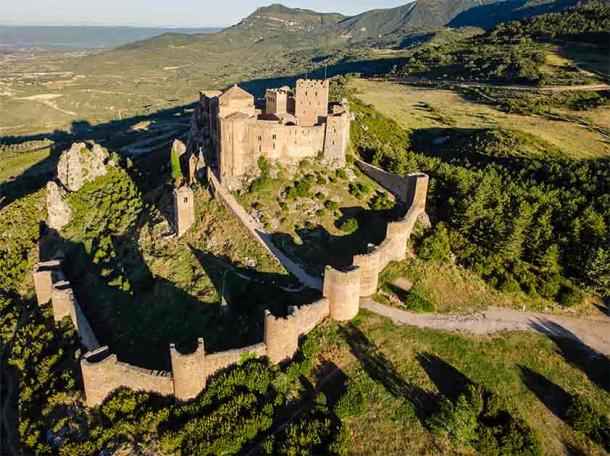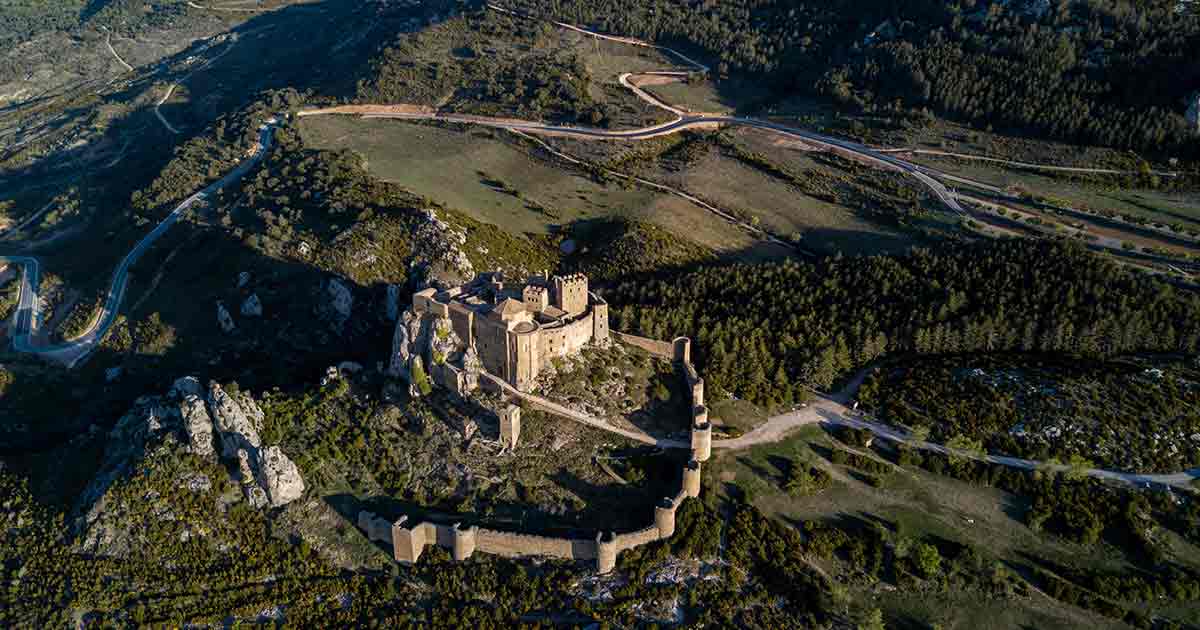The Formidable Castle of Loarre, Jewel of Aragon
Spain has a strong medieval heritage. Specifically, its northern region of Aragon is strongly rooted in the early origins of a modern and unified Spanish nation. As a vestige of that glorious medieval era, many formidable castles still prevail in spite of the passing centuries. Loarre Castle, located in Huesca province, Spain, is one such medieval fortress renowned for its historical significance and architectural beauty. What do we know about its history?

The initial phase of the construction of Loarre Castle was ordered by Sancho the Great, depicted in this portrait by Felipe Ariosto. (CC BY-SA 4.0)
Loarre Castle and the Ancestral Kingdom of Aragon
The majestic Loarre Castle is one of the oldest Romanesque castles in Spain, believed to have been built in the 11th and 12th centuries AD. The castle stands atop a rocky outcrop, offering stunning panoramic views of the surrounding landscape. Of course, such positioning was due to strategic reasons: it offered a commanding view, but it also made the castle hard to assault. In fact, the castle's strategic location overlooking trade routes and valleys contributed to its significance in controlling the region, as well as its survival.
- Spain’s Sagunto Castle: From Iberian Arse To Roman Sagunto and Beyond!
- 10 Real-life Fairytale Castles from Across Europe
Throughout its history, Loarre Castle served multiple purposes, from being a defensive stronghold to a monastery and a royal residence. When constructed in the 11th and 12th centuries, the primary purpose of the castle was military defense. Being perched so high up, it provided effective surveillance and defense against potential invaders. But its safety also made it a good place for the nobles to reside in, fleeing from their enemies in times of war. Of course, Loarre Castle also houses various rooms that served as living spaces, kitchens, storage areas, and more, each reflecting the lifestyle of its time.
One of the most notable features within the castle is the Romanesque church dedicated to Saint Mary. It's a small but intricately designed chapel with elements of both the Romanesque and Gothic styles. This also indicates the castle’s role as a religious center. This spiritual aspect was integral to medieval life, and the presence of a church within the castle's walls suggests its importance as a place of worship and reflection for both common residents and the nobles.

Loarre Castle from the air. (Tolo / Adobe Stock)
The Survival of Loarre Castle Through the Ages
Loarre Castle is a remarkable example of medieval architecture that showcases a fusion of Romanesque and Gothic styles, exemplified by its sturdy stone construction and impressive towers. The castle features typical Romanesque characteristics like robust, thick walls with small windows, semi-circular arches and simple, functional designs. Over time, however, as architectural styles evolved, the castle incorporated some Gothic elements as well, seen in the pointed arches and more elaborate decorations. This unique blend of the two styles provides Loarre Castle with its unmistakable charm and beauty.
The medieval architects were skilled in masking the actual functions of the castle with decorations and embellishments. Thus, the Romanesque and Gothic details all draw the eye away from the actual functions of this military structure. The tall towers, the battlements and ramparts, the culverts and secret nooks and crannies; they all exist, but perfectly hidden behind stunningly carved stone details.
In later periods, Loarre Castle also functioned as a prison and administrative center. Its strong walls and remote location made it an ideal place for confining prisoners or holding important administrative functions.
The evolution of the castle's purpose reflects the changes in society, from the importance of defense and religious influence in the medieval era to its adaptation for governance and even punitive purposes in later times. This adaptability and versatility speak to the castle's significance in accommodating the changing needs of the time, cementing its position as a historical treasure that reflects the socio-political dynamics of various epochs.

Interior of the Church of San Pedro within Loarre Castle with its spectacular dome. (Agustin Barredo Rodriguez/Wirestock / Adobe Stock)
Loarre Castle; Cultural Relic of Northern Spain
Loarre Castle’s picturesque setting and historical significance have made it a popular tourist attraction. It has also been featured in various films and television series, adding to its cultural impact. Most notable is its appearance in the 2005 medieval epic movie Kingdom of Heaven.
- The Spanish Castle That Inspired Walt Disney (Video)
- Full Suit of Armor Discovered in Spanish Castle Excavation
Of course, one of the aspects that contributes to its popularity is its remarkable preservation. The castle was, however, restored and preserved several times. The first major restoration was conducted in 1913, followed by subsequent preservation campaigns, mainly in the 1970s. It is important to note, however, that through these restorations, the original look of the castle was not changed. And that’s what really makes it special.
Today, Loarre Castle stands as a jewel of tourism in Aragon, and the north of Spain in general. Visiting the Loarre Castle offers a distinct glimpse into the medieval era, showcasing the architectural prowess and historical context of that time. Its strategic location, coupled with its impressive design, makes it a treasure trove for history enthusiasts and architectural admirers alike. If you find yourself in the region, don’t miss the opportunity to witness this marvelous historical site.
Top image: Loarre Castle. Source: FJ / Adobe Stock
References
Gudiol, A. D. 1971. El castillo de Loarre. Saragossa.
Stalley, R. 1999. Early Medieval Architecture. Oxford University Press.
UNESCO. 2007. “Loarre Castle” in UNESCO World Heritage Convention. Available at: https://whc.unesco.org/en/tentativelists/5135/

















